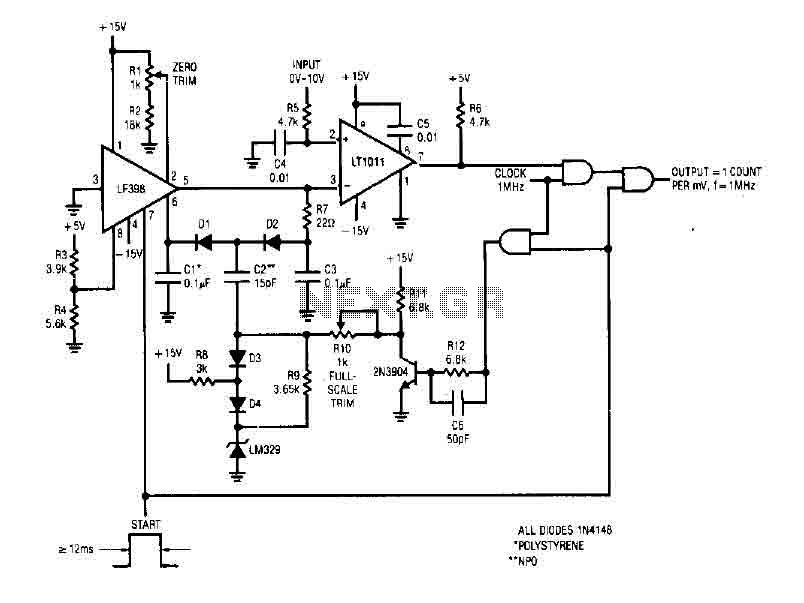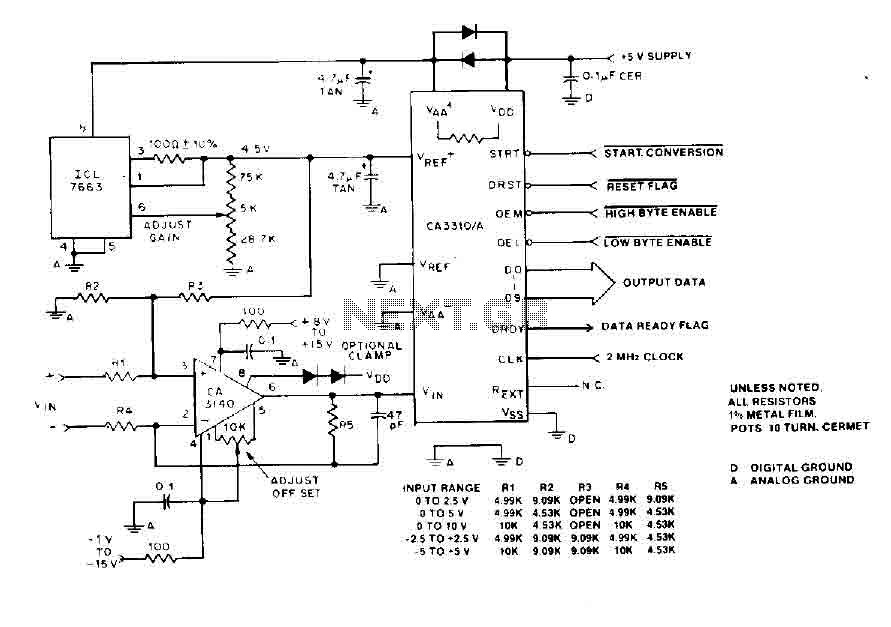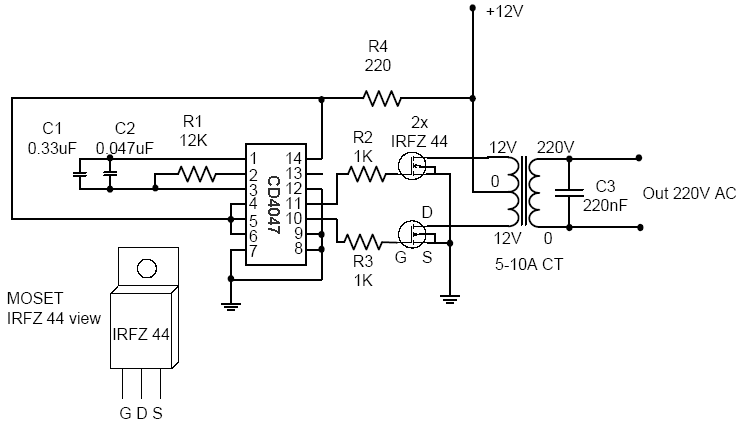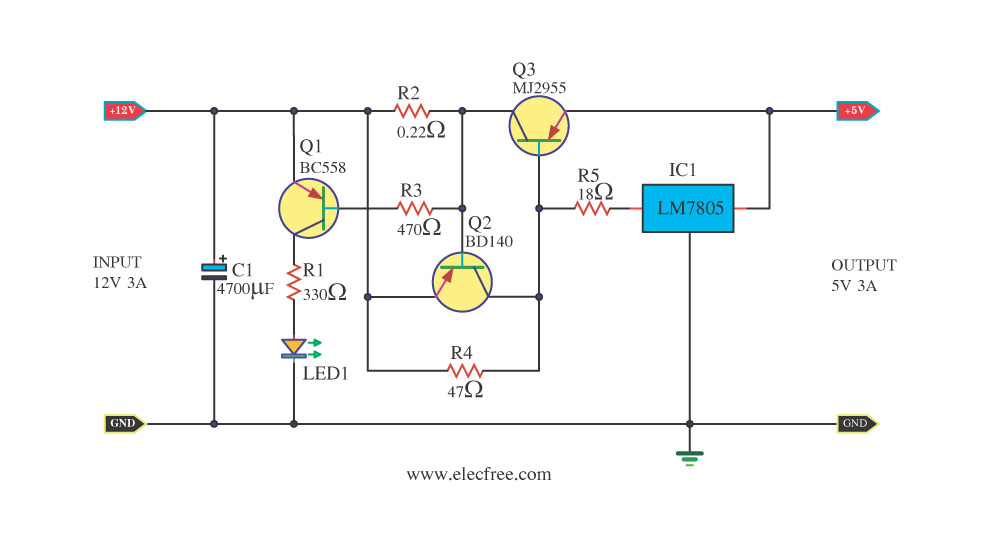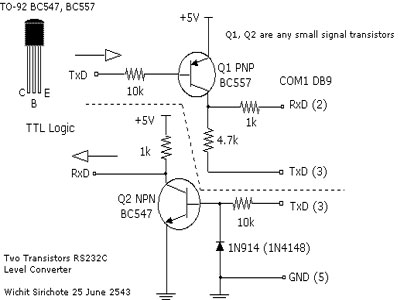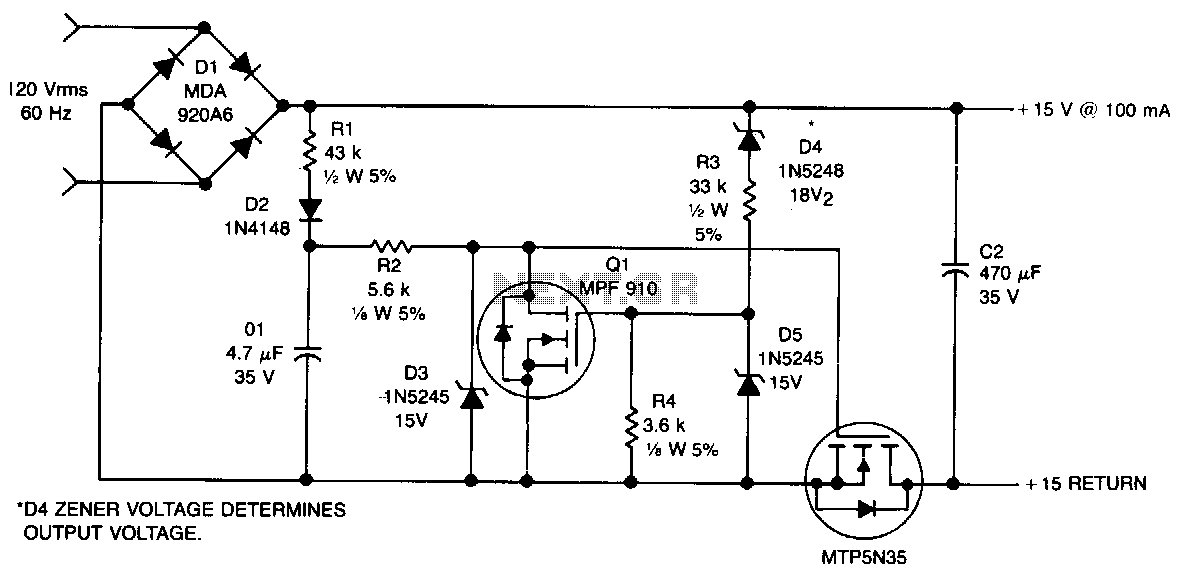
Monolithic Synchronous Voltage-to-Frequency Converter
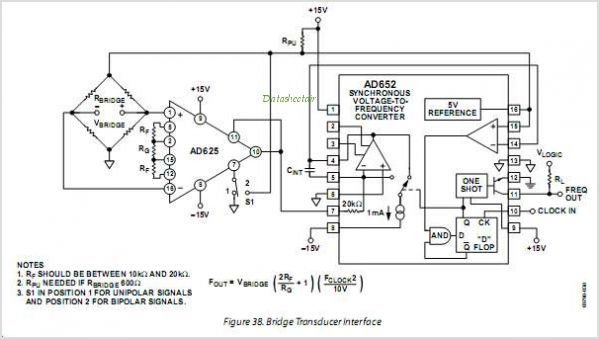
The AD654 is a monolithic voltage-to-frequency (V/F) converter that comprises an input amplifier, a precision oscillator system, and a high-current output stage. A single resistor-capacitor (RC) network is all that is needed to configure any full-scale (FS) frequency up to 500 kHz and any FS input voltage up to 30 V. The linearity error is only 0.03% for a 250 kHz FS, and operation is guaranteed over an 80 dB dynamic range. The overall temperature coefficient (excluding the effects of external components) is typically 50 ppm/°C. The AD654 operates from a single supply voltage ranging from 5 V to 36 V and consumes only 2.0 mA of quiescent current. The low drift input amplifier (4 V/°C typ) allows for direct operation from small signals such as thermocouples or strain gauges while providing a high input resistance of 250 MΩ. Unlike most V/F converters, the AD654 offers a square-wave output and can drive up to 12 TTL loads, optocouplers, long cables, or similar loads.
The AD654 voltage-to-frequency converter is designed for a variety of applications where precise conversion of voltage signals into frequency signals is required. The integration of a high-performance input amplifier ensures that the device can accurately process low-level signals, making it suitable for use with sensors such as thermocouples and strain gauges. The precision oscillator system within the AD654 is critical for maintaining accuracy across a wide frequency range, allowing for effective signal conversion up to 500 kHz.
The linearity error of 0.03% at 250 kHz indicates that the device can maintain a high degree of accuracy even at elevated frequencies, making it ideal for precision measurement applications. The 80 dB dynamic range ensures that the converter can handle a variety of input signal levels without significant distortion, making it versatile for different use cases.
Operationally, the AD654 is efficient, requiring only a single supply voltage, which simplifies circuit design and reduces the need for additional components. The low quiescent current of 2.0 mA contributes to overall energy efficiency, making the AD654 suitable for battery-operated devices. The high input impedance of 250 MΩ minimizes loading effects on the input signal, preserving the integrity of the measurement.
Furthermore, the capability to drive multiple TTL loads and optocouplers makes the AD654 an excellent choice for interfacing with digital systems and long-distance signal transmission. The square-wave output feature provides a straightforward means of signal processing, enhancing the versatility of the device in various electronic applications. Overall, the AD654 is a robust and highly functional V/F converter suitable for precision measurement and signal processing tasks in electronic systems.The AD654 is a monolithic V/F converter consisting of an input Amplifier a precision Oscillator system, and a high current output stage. A single RC network is all that is required to set up any full scale (FS) frequency up to 500 kHz and any FS input voltage up to 30 V.
Linearity error is only 0. 03% for a 250 kHz FS, and operation is guaranteed o ver an 80 dB dynamic range. The overall temperature coefficient (excluding the effects of external components) is typically 50 ppm/C. The AD654 operates from a single supply of 5 V to 36 V and consumes only 2. 0 mA quiescent current. The low drift (4 V/C typ) input Amplifier allows operation directly from small signals such as thermocouples or strain gauges while offering a high (250 M(ohm) input resistance.
Unlike most V/F converters, the AD654 provides a square-wave output, and CAN drive up to 12 TTL loads, Optocouplers long cables, or similar loads. 🔗 External reference
The AD654 voltage-to-frequency converter is designed for a variety of applications where precise conversion of voltage signals into frequency signals is required. The integration of a high-performance input amplifier ensures that the device can accurately process low-level signals, making it suitable for use with sensors such as thermocouples and strain gauges. The precision oscillator system within the AD654 is critical for maintaining accuracy across a wide frequency range, allowing for effective signal conversion up to 500 kHz.
The linearity error of 0.03% at 250 kHz indicates that the device can maintain a high degree of accuracy even at elevated frequencies, making it ideal for precision measurement applications. The 80 dB dynamic range ensures that the converter can handle a variety of input signal levels without significant distortion, making it versatile for different use cases.
Operationally, the AD654 is efficient, requiring only a single supply voltage, which simplifies circuit design and reduces the need for additional components. The low quiescent current of 2.0 mA contributes to overall energy efficiency, making the AD654 suitable for battery-operated devices. The high input impedance of 250 MΩ minimizes loading effects on the input signal, preserving the integrity of the measurement.
Furthermore, the capability to drive multiple TTL loads and optocouplers makes the AD654 an excellent choice for interfacing with digital systems and long-distance signal transmission. The square-wave output feature provides a straightforward means of signal processing, enhancing the versatility of the device in various electronic applications. Overall, the AD654 is a robust and highly functional V/F converter suitable for precision measurement and signal processing tasks in electronic systems.The AD654 is a monolithic V/F converter consisting of an input Amplifier a precision Oscillator system, and a high current output stage. A single RC network is all that is required to set up any full scale (FS) frequency up to 500 kHz and any FS input voltage up to 30 V.
Linearity error is only 0. 03% for a 250 kHz FS, and operation is guaranteed o ver an 80 dB dynamic range. The overall temperature coefficient (excluding the effects of external components) is typically 50 ppm/C. The AD654 operates from a single supply of 5 V to 36 V and consumes only 2. 0 mA quiescent current. The low drift (4 V/C typ) input Amplifier allows operation directly from small signals such as thermocouples or strain gauges while offering a high (250 M(ohm) input resistance.
Unlike most V/F converters, the AD654 provides a square-wave output, and CAN drive up to 12 TTL loads, Optocouplers long cables, or similar loads. 🔗 External reference
